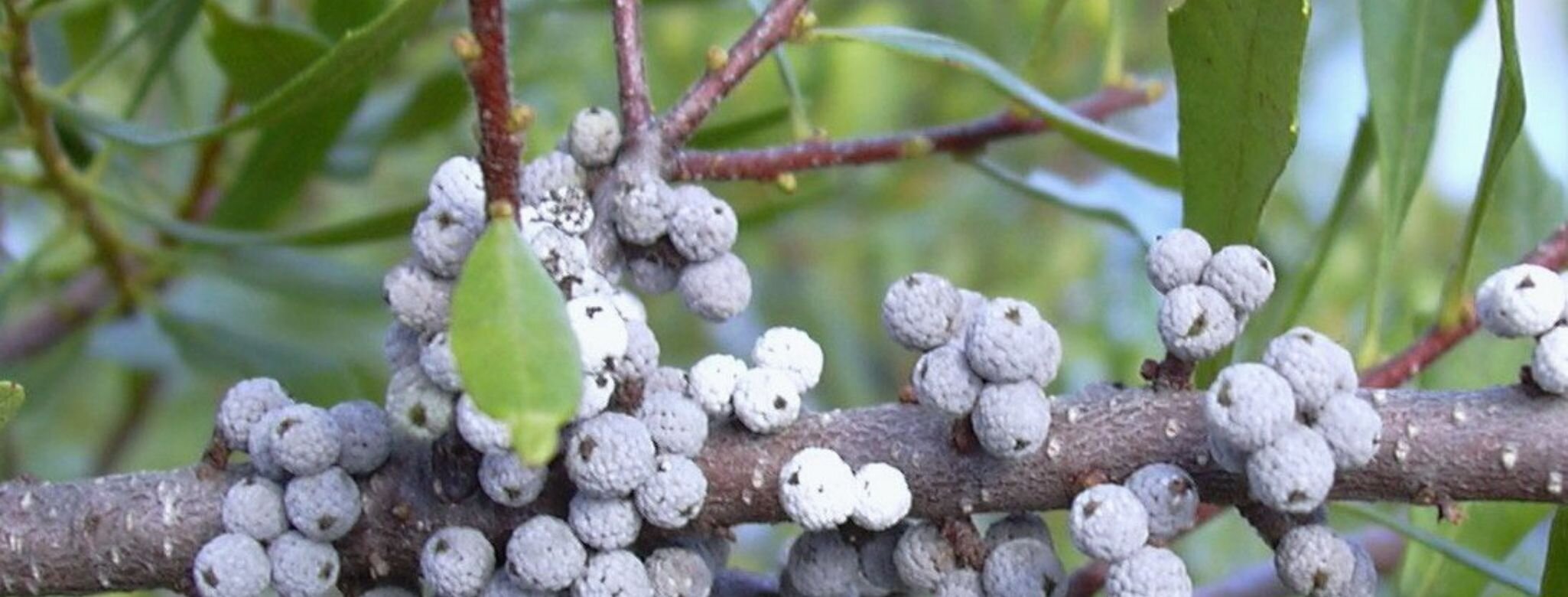Myrica Fruit Tallow (Wax)
Myrica fruit wax is a substance found on the berries of the Morella cerifera, a small tree/large bush that goes by the names laurel wax (Myrica Pubescens (Laurel) Fruit Wax); ocuba wax; bayberry tallow; vegetable tallow; wax myrtle; wax-myrtle; southern wax myrtle. The wax gathers on the tiny grey-blue berries. The yield of wax is the highest of any plant and as such has been traditionally used to make candles. It has become a very popular cosmetic ingredient as it adds thickening of formulations with a powdery skin feel.
Ecology
Bayberry is a fast growing evergreen shrub growing to 9 meters (29ft) and is native to central America and South West USA. You will find the shrub on every continent except Australia. It thrives in moist swampy woods and damp costal areas. It can grow in full sun or semi-shade so is suitable to many climates. (https://pfaf.org/user/plant.aspx?LatinName=Myrica+cerifera)
Plant Uses
There have been a few studies regarding the different medicinal properties of the varieties of Myrica. Some varieties contain Myricetin, a known analgesic. The essential oils of the fruit of Myrica gale have been shown to exhibit antifungal activity against some foodborne fungus. There are also reports of its antioxidant effect due to high levels of anthocyanins in some varieties.
Wax
The wax is found on the small grey-green berries. Depending on the species, the berry can contain up to 30% wax; these surface lipids are 10 fold more abundant than any other plant species. The wax doesn’t accumulate on the fruit proper, instead it gathers on the bay berry knobs on the outer skin (exocarp).
Its fatty acid profile indicates that it is not actually a wax, but more of a hard butter or vegetable ‘tallow’.
The wax that the various species yield is not a true wax but rather a vegetable tallow composed largely of glycerides. It is usually classed as a wax, however, for it’s uses are those of waxes” (Williams, 1958)
On the other hand a wax is defined as hydrophobic organic compounds which comprise long alkyl chains. It is different from other waxes as it contains saturated triglyceride (triaglycerol/TAG) and diglyceride (diaglycerol/DAG) with palmitate and myristate as the dominant acids. For this reason it is not considered a true wax.
Myrica Fruit Wax Fatty Acid Profile
Wax Uses and Extraction
The wax has traditionally been used in candle making. it has also been used in soap making, ointments (medicinals) as a leather polish and in plastic arts and moulding. (Williams, 1958). The wax is extracted by boiling the berries until the wax floats to the top. It is then scraped off and purified.
Cosmetics
Bayberry wax is oil soluble (hydrophobic) and has a melt point of 48-55 c. Although it has a low melt point it is a brittle wax at room temperature, similar to carnauba.
Bayberry wax can be used in cosmetics to create balms and ointments, and to add viscosity to emulsions. It can be used as a vegan alternative to beeswax but as its melt point is lower you would need to use a higher amount to gain the same gelling power.
References
https://www.sigmaaldrich.com/life-science/nutrition-research/learning-center/plant-profiler/myrica-cerifera.html
(https://pfaf.org/user/plant.aspx?LatinName=Myrica+cerifera)

